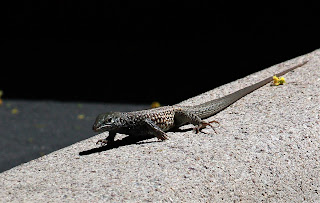Spy Mistress by
William Stevenson 2007
I have had some interest in WWII intelligence operations
ever since I confirmed that my Uncle John was a spy during that war. The
confirmation came partially from a box of materials sent to me after his death
and then from now unclassified government files of his employment records with
the OSS. He probably only took an occasional cloak and dagger trip because his work
was primarily analytic in his academic background area of far eastern
anthropology and sociology. Uncle John’s
story has plenty of gaps and is still waiting to be told in detail. There is
definitely a book in there somewhere.
This brings me to the book I have just finished titled Spy
Mistress by William Stevenson. It is an outline of the actions and
career of Vera Atkins, a Romanian Jew who became one of the leaders in
England’s WWII secret service. She grew
up in Eastern Europe and changed her name when she settled in Britain in the
1930’s. And just like my Uncle John, there are gaps in her story right up to
the present day.
Atkins successfully hid her Jewish background and rose to
power in the intelligence community in spite of being a woman in an almost
completely male organization. The book
tells the story of how Atkins maneuvered her way into essentially running the
anti-Nazi resistance in Europe during and after the war. It also covers her
relationships with several men including General “Wild Bill” Donovan, the head of America’s newly formed
OSS. One of the many things I learned was just how strong the
Appeasement movement and the virulent anti-Semitism
were in the pre-war era. Churchill was not in power yet and had major
difficulty trying to convince both his own countrymen and allies of the
danger of Hitler. When Bismarck said
that Hitler was just a mob leader, Churchill replied with some fascinating lines
from Kipling that also seem compelling in today’s political climate.
“This is the sorrowful story
Told when the twilight fails
And the monkeys walk together
Holding their neighbor’s tails.”
At another point Churchill returned to Kipling to comment
that “These appeasers feed the crocodile in the hope of being the last to get
eaten.” The early chapters are devoted to the lead up to the war and
then it turns to the fight to formulate the SOE (Special Operations Executive), which was
charged with training, equipping, and organizing armed resistance in Nazi
occupied countries. Atkins began her
career as a kind of an administrative assistant and slowly gravitated into leadership
as her knowledge and skills became evident. The old line military intelligence held little
truck with sabotage and guerilla warfare, but Atkins and her associates
supported the use of so called "closework" that followed the philosophy of the Greek physician Hippocrates who said “A desperate disease requires a
dangerous remedy”
The SOE was heavily
involved in the insertion of agents and the organization of resistance cells as
well as developing unusual tools for transmitting messages and for bomb making
and other devices for killing or maiming the enemy. One project involved the insertion of
explosives into piles of animal feces. If this sounds James Bondish, it might
be well to note that Ian Flemming was an important figure in the SOE hierarchy.
I must admit that I was not aware of how much pushback there
was against guerilla war in occupied areas and how much anti-Semitism sentiment
there was in the upper levels of the British government. Throughout the war,
even after Churchill came to power and the USA entered the fray, the British
authorities did not want to send Jews onto the continent even though they had
the most experience in being vilified and murdered and had a real reason to
engage in physical payback.
Atkins survived the war and lived on in relative obscurity
for many years. Some of her story was not told until after her death. I wish the book had a somewhat more vivid
style and a more compelling narrative structure. Events are often tied to
individuals in Europe whose names and background are unfamiliar at least to me.
This can bog things down and tempt the reader to skip things rather than participating
in a cohesive progression. My guess is that works like this end up being read
by fiction writers who then build their own more engaging and suspenseful stories
of heroic actions.
I give it a 3. But I
did learn some things.










































